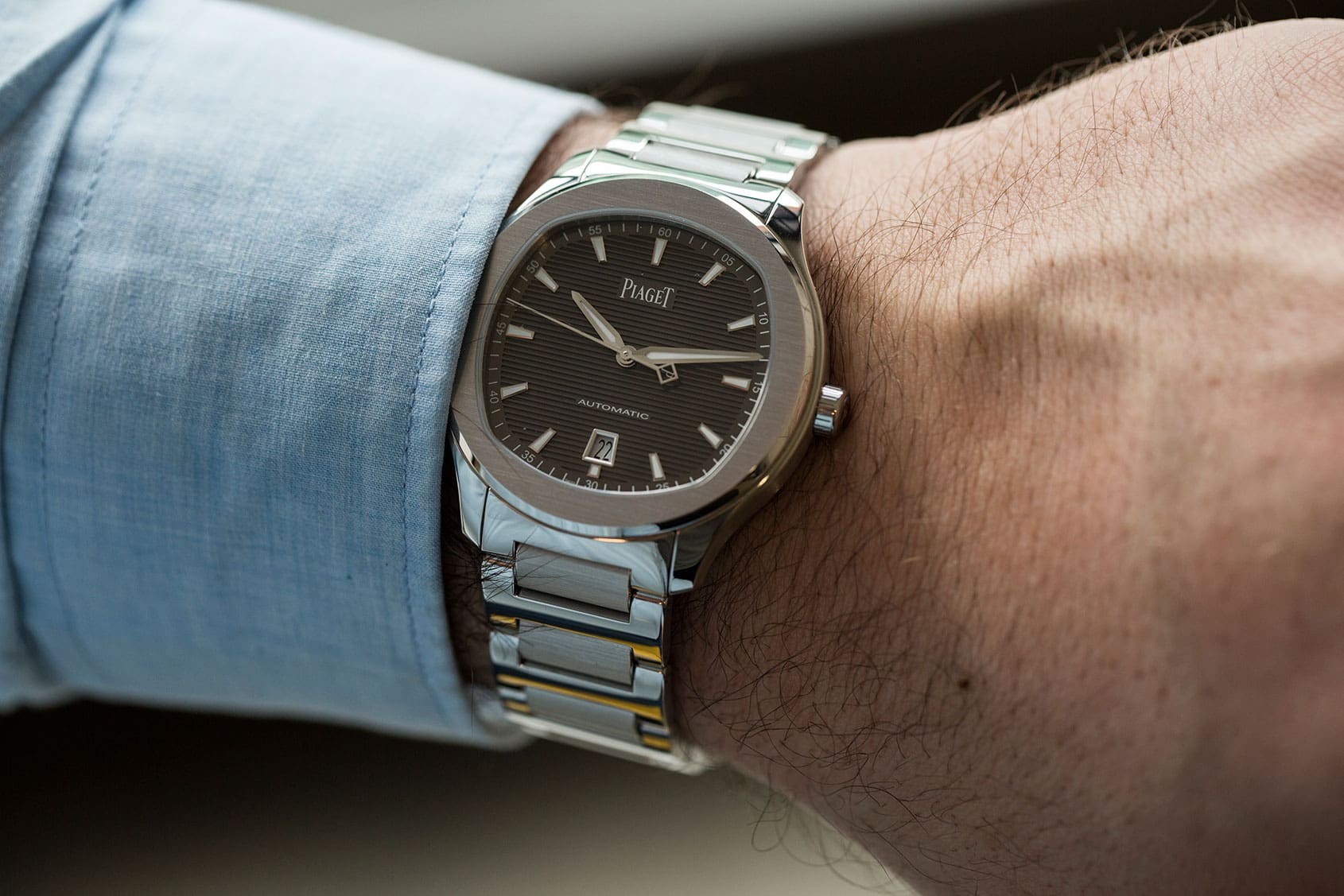Is the rise of male jewellery fuelling our love for integrated-bracelet watches?
Luke BenedictusWorn by the likes of Elizabeth Taylor and Andy Warhol, Piaget was a brand that reeked of jet-set glamour in the 1970s. The launch of the Piaget Polo, the brand’s first integrated-bracelet watch, did little to dispel this aspirational image. Released in 1979, the watch got widespread attention after it was photographed on the wrist of former Bond Girl and Piaget brand ambassador Ursula Andress when she presented the winner’s trophy at the World Polo Championship in Palm Beach, Florida. But while the Polo was ostensibly a luxury sports watch, the company’s chairman Yves Piaget was at pains to highlight a particular aspect of its design. “It’s a watch bracelet, rather than a mere wristwatch,” he insisted. The Piaget Polo, in other words, was a hybrid piece that sat at the intersection between watches and jewellery.
There may have been an ulterior motive in positioning the release in this way. Like Cartier, Bulgari and Chopard, Piaget is one of the few brands that is built around a dual focus on both watches and jewellery. As someone from Cartier mentioned to me at Watches & Wonders, these brands often want to overcome a specific gender challenge. Men, on the whole, are more interested in the brand’s watches, while women are more interested in their jewellery. But in order to drive brand growth they’d like to get women more interested in buying watches and men more into buying jewellery. Strategic cross-pollination between the categories therefore makes sense. Viewed from that perspective, Piaget’s words – “It’s a watch bracelet, rather than a mere wristwatch” – take on a new light. There may even have been hopes the Piaget Polo could prove a sort of gateway drug into jewellery for men.
I mention all this because it offers another possible explanation into the modern popularity of the integrated-bracelet sport watch phenomenon. The rationale for this appeal is usually explained by pointing to the vast evolution in the technical quality and comfort of modern watch bracelets. In addition, dress codes have become more casual – a process only accelerated by the social effects of COVID – and demand for the dress watch, the traditional formalwear sidekick, has progressively waned. Instead people increasingly hanker after sports watches that are more casual and robust.
Yet Piaget’s comment offers another possibility. Right now, men are more open to wearing jewellery than ever before. In fact, the market research company Euromonitor International has found that sales for male jewellery have been rising steadily since 2012. It’s a trend that’s ever more noticeable in pop culture too, whether that’s through Connell’s necklace in Normal People or Harry Styles happily rocking a string of pearls.
These display of progressive masculinity may still be too fraught for many men. But the male jewellery trend may be playing out in a subtler way with integrated-bracelet watches. With one of these pieces, you get to experience some of the shimmer and tactile pleasures of jewellery but in a form that’s more easily palatable. It’s long been argued that watches are, effectively, the acceptable face of men jewellery. The integrated bracelet watch simply makes that connection explicit,









